Art and Creativity: Moving Painlessly Between Digital Art and Physical Presentation
As a gallery proprietor, it seemed pretty inevitable that we would-- sooner or later-- be approached with the question of including digital art in the gallery.
Maybe what comes to your mind is a digital picture frame displaying art... but that's not what we have in mind here. We're talking about framed art, on the wall!
Digital Art in 3D Space? A Tricky Proposition
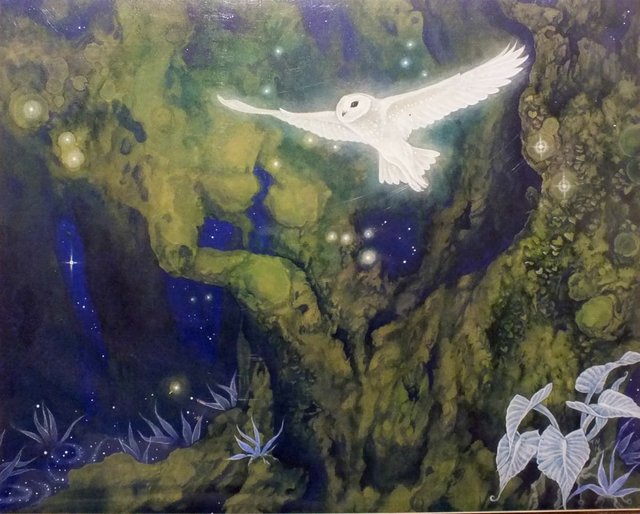
Digital print by Teal Newcomb
Digital artists have been around for quite a while. As technologies and software options have improved, so has the quality of the art.
Gone are the days when printed versions of digital art only manifested as designs for mugs and T-shirts, and occasional book covers. The quality of the art nowadays can be quite stunning, and is quite worthy of gracing the walls of your home!
But where does this all fit, in the greater stream of art... such as displaying your work in an art gallery?
Back in the spring, we were approached by the first "purely digital" artist we've worked with, and whose work we now have in the gallery. It was an interesting experience, so I wanted to share a little bit more about the digital-to-brick-and-mortar transition.
Digital Art... and the Art Gallery Business
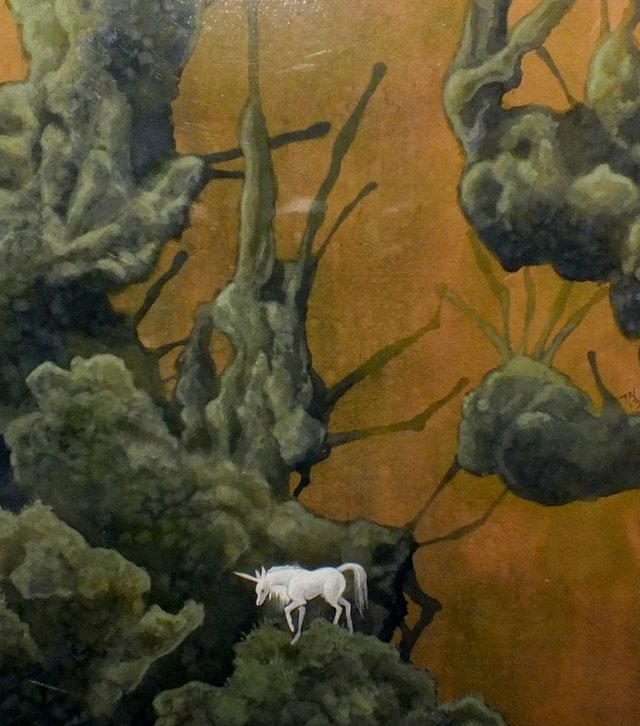
Digital print by Teal Newcomb
In the traditional sense, art galleries have only ever sold "physical" art to clients. Performance art notwithstanding, the expectation of most gallery visitors is that they will potentially be able to buy what they see on the walls and take it home.
Conversely, most digital artists are familiar with creating art in electronic space, and perhaps selling their work as "downloads." Which is perfectly reasonable. A few digital artists do explore "print space," but mostly in the form of trading cards, fantasy games and the like. Actual "art you hang on the wall" is somewhat of a rarity.
In this case, we were tasked with bringing the digital to life.
We learned a lot, and it was an interesting collaboration between artist and gallery.
Getting it Into Print: Odds and Ends
One of the first things to understand about digital art-- as a gallery owner-- is that there is no such thing as "the original" that exists in physical space. The original art is simply a computer file.
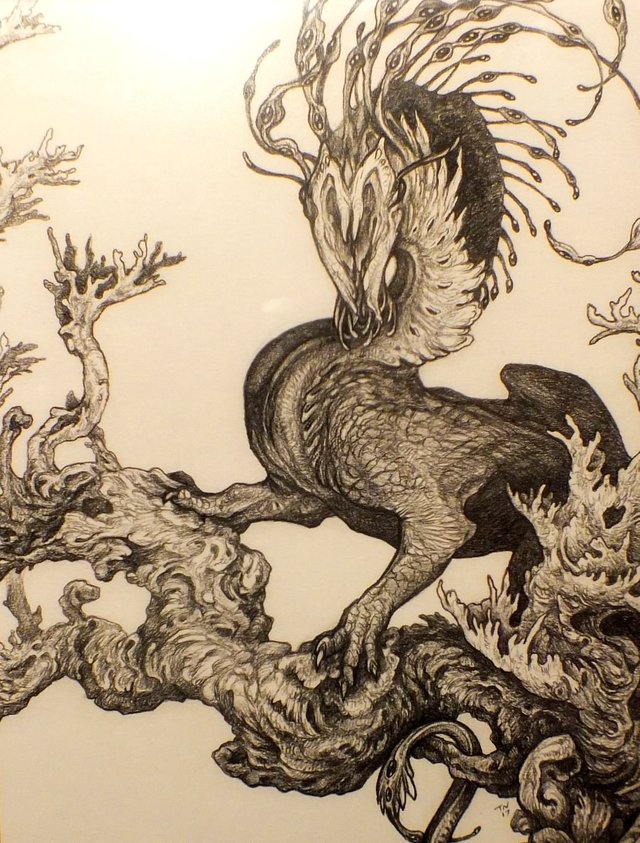
Digital print by Teal Newcomb
The next thing to understand-- because now we are going to get into the business of print making-- is that most digital art is "scalable." Which means that the artist and gallery have to agree on what a good size for each piece might be.
From this perspective, one of the important tips for digital artists is "build it BIG!"
If we assume that we want to print a 16" x 20" (about 40.5 x 51cm) image at 300dpi (which will render a high quality print when printed), you're looking at an original file that's 4800 x 6000 pixels.
Oddly enough, you don't really need anything much bigger than that.
How come?
Well, once you get to 16 x 20 any additional size also means the observer will be further away from the image, so additional detail doesn't really make the art look crisper or better, when viewed from a natural observation distance.
What Kind of Print?
Of course, there's more to the process than merely coming up with the right size file and hitting the "print" button.
One of the greatest challenges with digital art is correct color matching... or avoiding the dreaded "Why doesn't my print look like my screen image?" question.
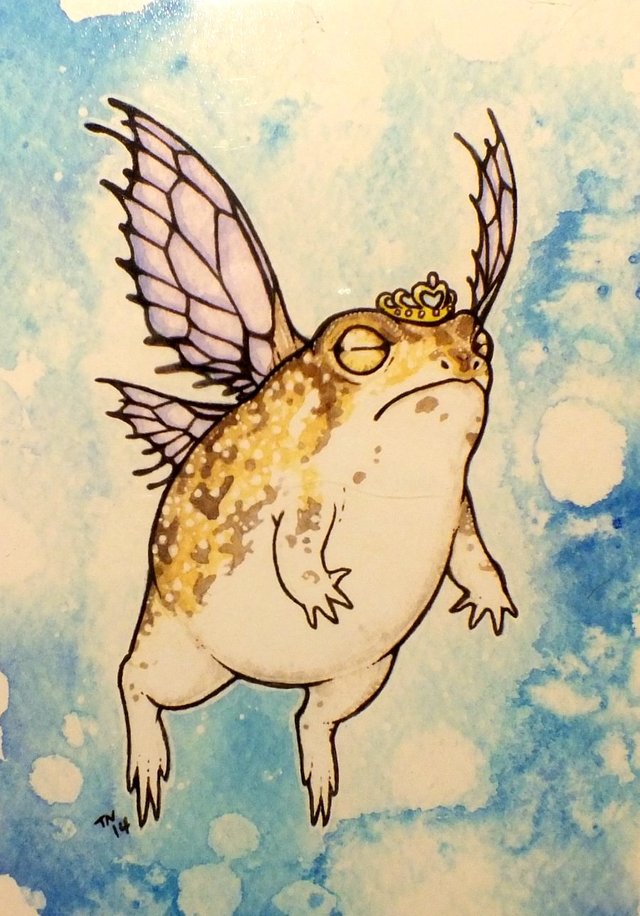
Digital print by Teal Newcomb
The basics (and I am NOT a print expert) is that electronic screens render color using the RGB (Red, Green, Blue) model while print is rendered with the CMYK (cyan, magenta, yellow, black) model. This may sound like so much technical mumbo-jumbo, but it becomes especially important when trying to print something that involves substantial amounts of the color black. RGB black is actually a mixture of colors, while CMYK black is "true black." Which means your RGB print can end up with "colorful shadows" in the black areas if the file isn't converted before a print is made.
Luckily, the file conversion is pretty easy, but some experimentation is still needed.
The next consideration is the medium and method of printing.
Most of the digital artists I have met take the "quick and dirty" route-- they simply print their art as a photographic image, on photographic paper. The results are usually pretty good, and work well if your ambitions don't stretch too far beyond selling some casual 8x10 prints people can take away and frame for themselves.
If you have a number of images, I suggest ordering a "test set" in an expensive 4x6 or 5x7 size, just to see how the colors transfer.
For a more "fine art" looking result, giclée printing on archival quality paper (or even canvas) would be a more appropriate choice.
Again, getting smaller test prints made-- possibly on different types of paper-- is highly recommended, so you can decide whether the colors need further adjusting before committing to larger prints-- and more expense.
So Do We Just Start Printing?
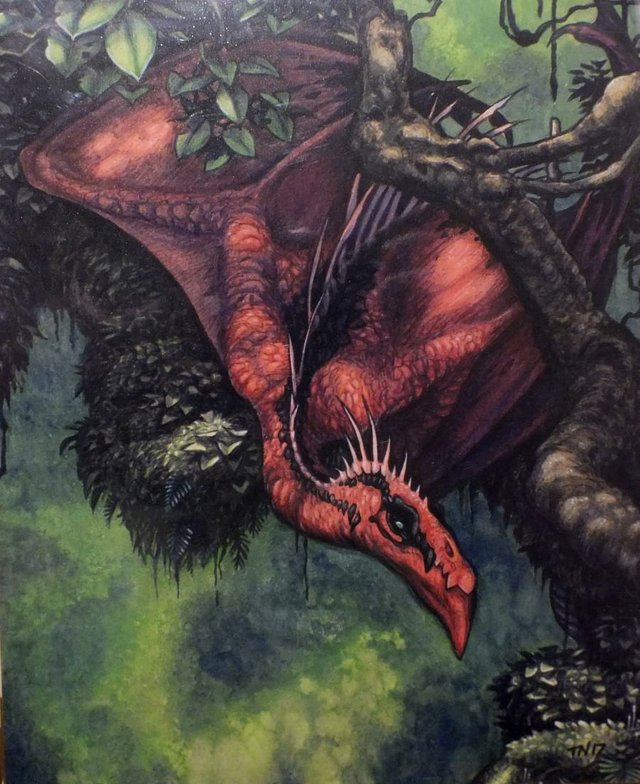
Digital print by Teal Newcomb
Before you put in a print order, it is important to sit down and examine your objectives, as a digital artist entering the print world.
What do you want to do?
To maintain the value and integrity of your work, we suggest you keep prints in strict signed limited editions, regardless of size and print type. If you're printing large art prints to be framed and displayed in a gallery for sale, you might do well to limit editions to 10 or 20 signed and numbered pieces.
Smaller sizes to be sold unframed might be in signed editions of 50. If you also want to get into ACEOs, we certainly wouldn't recommend an edition size above 100 signed copies per image.
Last, but not Least: Your Signature Matters!
Since digital art is basically infinitely reproducible, the greatest value you add is your hand written signature. It is the mark of authenticity that makes an "official" print someone buys at a gallery (or even through your own online shop) stand out from a downloaded file someone printed out at home.
This is an important area of digital art we cannot overemphasize to our digital artist friends. Your signature is-- basically-- gold. So take it seriously!
Thank you for reading! Red Dragonfly is a proud member of the @sndbox creative initiative.

The Red Dragonfly is an independent alternative art gallery located in Port Townsend, WA; showcasing edgy and unique contemporary art & handmade crafts by local and worldwide artists. All images are our own, unless otherwise credited. Where applicable, artist images used with permission.
Thank you @reddragonfly.
Have been on the look out for this information....so very necessary for any artist.
Wishing you and yours a Happy Christ-mas.
Cheers.
Thank you-- glad you found it useful! Digital art is a bit of a "new frontier" for many art galleries, so we are just learning as we go along.
Many thanks for this article @reddragonfly, like you red my mind and thoughts going trough my head last month. I was thinking a lot should I make some of my drawings and watercolors printed. Sometimes customers just don't have enough money for some of my art but still they would like to have it and it's the reason I started thinking how to make some things affordable to them. You answered so many questions here and now I know I will do limited edition prints guided with your tips. Thanks a lot again!
There are many different affordable options for artists to put their work into the hands of more people. These days, printing costs are pretty low... and since a lot of people only have small spaces, you can take a 120x90cm painting and make a 40x30cm print... and possible make someone happy. Good luck with your projects!
There was talk of tokenizing art work on the block chain. Thus, you could be assured that this one was yours and only yours... but that still doesn't stop people from making more copies.
I have always loved creating drawings, but the digital world just offers so much. Don't like that hand? Just change it. Don't like how the final arrangement looks, just move everything. You just can't do that with physical media.
You're absolutely right-- the digital world offers possibilities for creating art we never even dreamed of, 20 years ago.
So far, our experience in working with digital artists has been pretty much experiments and "baby steps." For example, there's that infinite ability to change ("improve") an image... but if you commit to, let's say, a limited edition series of 20 signed prints... you're also committing to a "fixed" edition of that particular piece of work, because that's what the art buyer agreed to. So then you get into the ethical discussion of whether a "ver 2.0" is acceptable, or whether it's "acceptable, but with a new name" or something else.
Hmmm. I might need your help someday. Have a look at my blog if you get a chance and you'll see why.
Well, you got yourself a new follower... because you create "real" content, and there IS a growing community on Steemit who care about content and blogging and art, and we will NOT be displaced by the 53,278th post on the finer nuances of bitcoin price charts.
Well, I appreciate the follow. We're on the same page when it comes to those damn charts that are outdated and obsolete within mere minutes after being published. You damn right my content is real and it's something I'm proud of.
Also. I want to expand(eventually). I don't mind offering a cut of the profits to anyone who will print my work and show it off for sale. People from every walk of life have come to my blog and enjoyed my art. This blows my mind. I thought I was too weird.
I saw the possibility of digital art moving into the physical world, but, not having the expertise, I left it at that, knowing that the time for it to happen will arrive.
Thank you for a very interesting article.
I think it is definitely wise to engage in some experimentation, just to see how well your work "translates" into physical space. Since the walkthrough above (which took place back in March) we've talked to a few other digital artists... with a couple (for example) there work was too small/detailed to "translate" well to print.
I laughed a bit because I'm definitely guilty of taking the "quick and dirty" route. This was a very helpful post and I'm also enjoying the rest of your feed. Thanks for sharing your expertise.
Thanks for the kind words-- glad you found it useful! Digital-to-print seems best approached as an experiment until you dial your own process and figure out what works specifically for YOU.
Excellent post, digital art has become a favorite of mine since joining steemit. I was introduced to it with @nonameslefttouse's blog and have grown a great appreciation for it ever since. Glad to see it's catching on!
That was quite an informative read. I'm yet to try and print any of my photos just to have around and to test how they would look on paper. My significant other wants to put some printouts on our walls, but I don't really feel like putting up my own stuff at home.